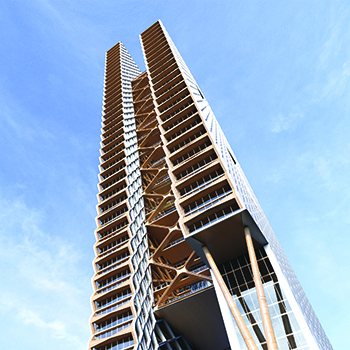Filter by
You must be a CTBUH Member to view this resource.
River Beech Tower
Building
Vision
residential
timber
228.0 m / 748 ft
80
300
Usually involved in the front end design, with a "typical" condition being that of a leadership role through either Schematic Design or Design Development, and then a monitoring role through the CD and CA phases.
The Design Engineer is usually involved in the front end design, typically taking the leadership role in the Schematic Design and Design Development, and then a monitoring role through the CD and CA phases.
You must be a CTBUH Member to view this resource.
Usually involved in the front end design, with a "typical" condition being that of a leadership role through either Schematic Design or Design Development, and then a monitoring role through the CD and CA phases.
The Design Engineer is usually involved in the front end design, typically taking the leadership role in the Schematic Design and Design Development, and then a monitoring role through the CD and CA phases.
CTBUH Atlanta Hosts Tall Timber Panel Event
26 July 2018 - Event
CTBUH Joins Chicago Seminar on Mass Timber Buildings
8 June 2017 - Event

30 October 2017 | Chicago
Robert Foster of The University of Queensland is interviewed by Chris Bentley during the 2017 CTBUH Australia Conference.
Rune__Abrahamsen.jpg)
30 October 2017
Rethinking CTBUH Height Criteria In the Context of Tall Timber
Robert M. Foster, University of Queensland; Michael H. Ramage, University of Cambridge; Thomas Reynolds, The University of Edinburgh
Recent developments in the design and construction of progressively taller buildings using engineered timber as a structural material raise important questions about the language that...
Rune__Abrahamsen.jpg)
30 October 2017
Rethinking CTBUH Height Criteria In the Context of Tall Timber
Recent developments in the design and construction of progressively taller buildings using engineered timber as a structural material raise important questions about the language that...

20 April 2017
River Beech Tower: A Tall Timber Experiment
The Chicago River Beech Tower is a collaborative research effort with the goal of identifying challenges and opportunities associated with designing increasingly tall mass timber...
26 July 2018
CTBUH Atlanta recently held an evening of panel presentations that addressed some of the challenges and opportunities associated with designing mass timber structures.
Subscribe below to receive periodic updates from CTBUH on the latest Tall Building and Urban news and CTBUH initiatives, including our monthly newsletter. Fields with a red asterisk (*) next to them are required.
View our privacy policy